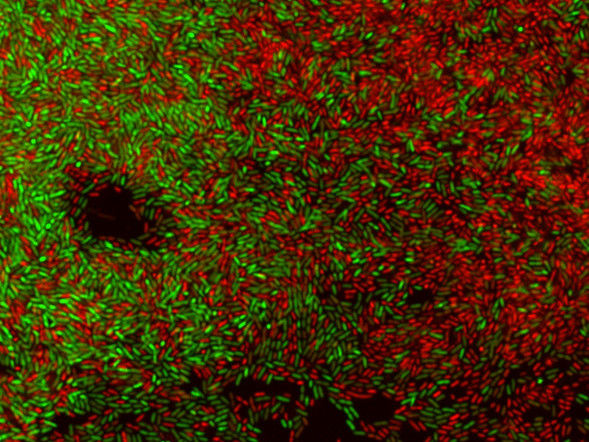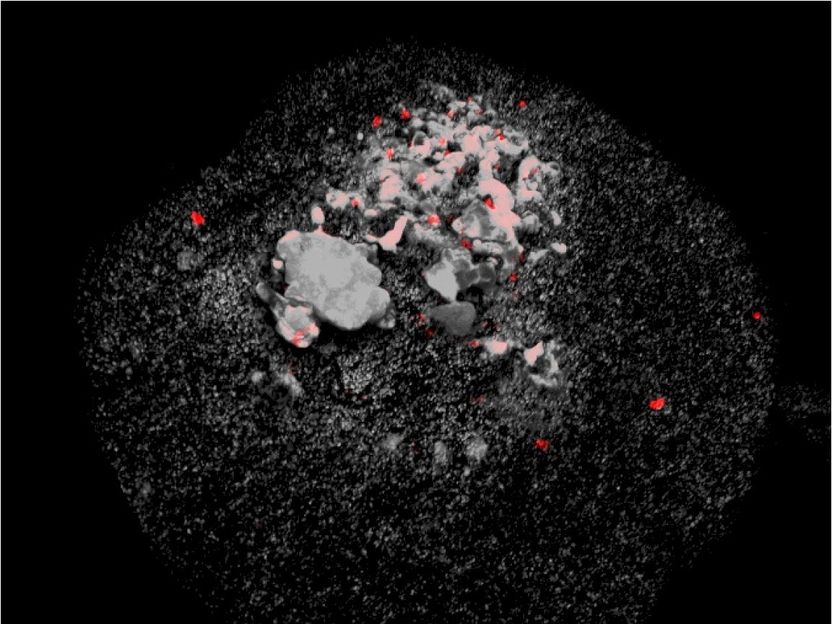New mechanism of pancreatic cancer discovered
A new study from the Swedish medical university Karolinska Institutet shows how two types of cell change interact in the development of cancer. The results can improve the chances of early discovery of cancer – including pancreatic cancer.
Cancer of the pancreas is a form of cancer that has few treatment options and a poor prognosis. It is linked to two particularly common cellular changes: mutations in a family of cancer genes called RAS and increased activity in the “Hedgehog” signalling pathway, a molecular signal transmission mechanism that is normally only activated during embryonic growth.
The new study, which is published in Nature Structural & Molecular Biology, shows how RAS and the Hedgehog pathway interact in the development of pancreatic cancer in mice. Activation of cancer genes in the RAS family causes the tumour cells to secrete the factor (SHH) that activates Hedgehog signalling, and shuts off the tumour cell’s own ability to respond to this type of stimulation.
The blocking of the Hedgehog response helps, in this phase, to secure the survival of the tumour cells while the surrounding cells are stimulated to grow. In a later phase, when the tumour has become more aggressive, the block is lifted so that tumour cell growth is also precipitated though Hedgehog signalling. The scientists have also identified the proteins that govern the tumour cells’ sensitivity to SHH.
One of the reasons for the poor prognosis associated with pancreatic cancer is that the disease is hard to detect at an early stage. The researchers believe that their results can be of significance to the development of better diagnostic methods and treatment strategies.
Original publication: Matthias Lauth, Åsa Bergström, Takashi Shimokawa, Ulrica Tostar, Qianren Jin, Volker Fendrich, Carmen Guerra, Mariano Barbacid and Rune Toftgård; "YRK1B-dependent shift of Hedgehog signaling from an autocrine towards a paracrine mode by mutant RAS"; Nature Structural & Molecular Biology 2010
Most read news
Topics
Organizations
Other news from the department science

Get the life science industry in your inbox
By submitting this form you agree that LUMITOS AG will send you the newsletter(s) selected above by email. Your data will not be passed on to third parties. Your data will be stored and processed in accordance with our data protection regulations. LUMITOS may contact you by email for the purpose of advertising or market and opinion surveys. You can revoke your consent at any time without giving reasons to LUMITOS AG, Ernst-Augustin-Str. 2, 12489 Berlin, Germany or by e-mail at revoke@lumitos.com with effect for the future. In addition, each email contains a link to unsubscribe from the corresponding newsletter.
Most read news
More news from our other portals
Last viewed contents
Unconventional natural gas wells associated with migraine, fatigue
Pieris Initiates Phase I Clinical Trial for Lead Anticalin Compound - Anti-VEGF PRS-050 is first Anticalin tested in humans
New combination therapy looks promising against ulcer bacteria
European Medicines Agency advises on compassionate use of daclatasvir - Opinion concerns use in combination with sofosbuvir in patients with chronic hepatitis C in urgent need of therapy to prevent progression of liver disease
Novartis completes shipment of US supply of Fluvirin seasonal influenza vaccine
A Change of Culture for Healthcare
Medicyte GmbH Benefits From Multi-Million Euro EU Grant VascuBone
Pneumonoultramicroscopicsilicovolcanoconiosis

Biofilms - an invisible threat to food safety - Hotspots for biofilms

Snake venom treatment investigated as antibiotic alternative for eye infections






















































